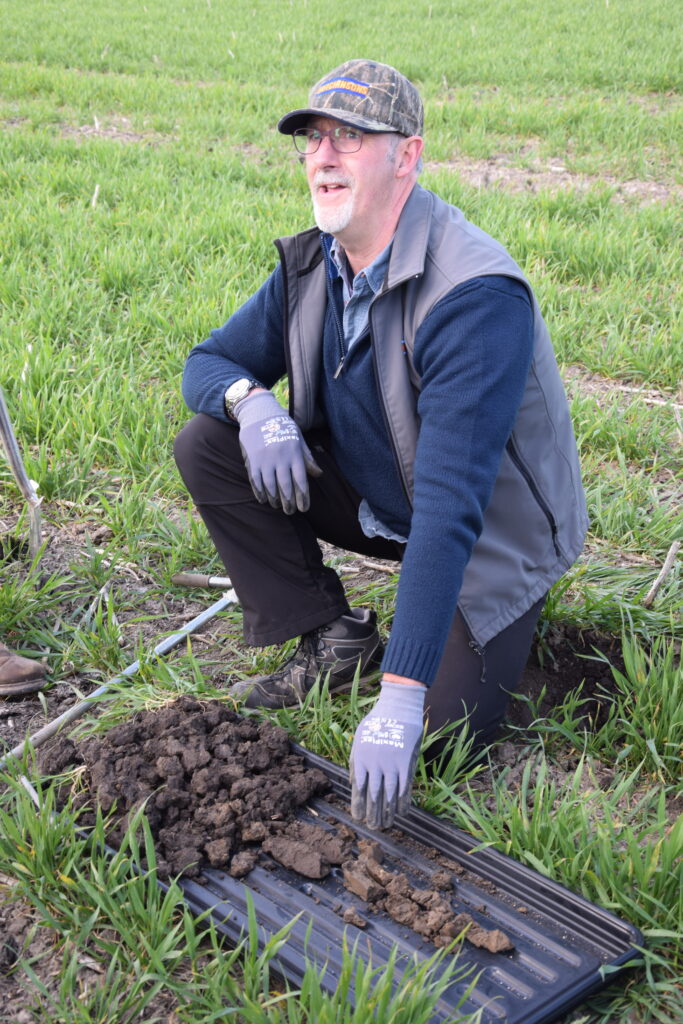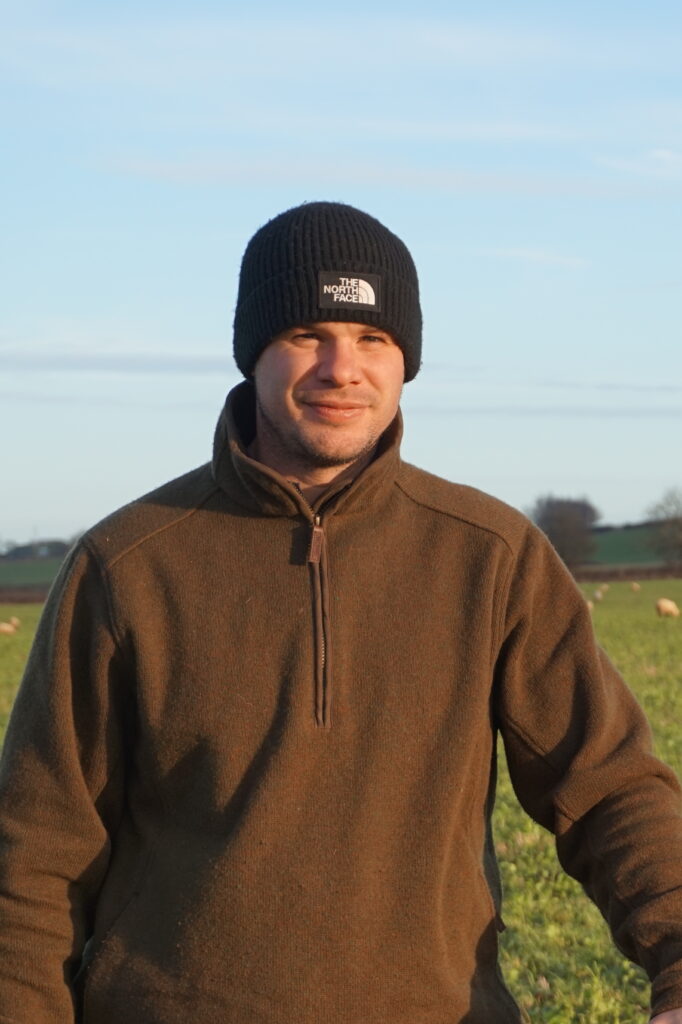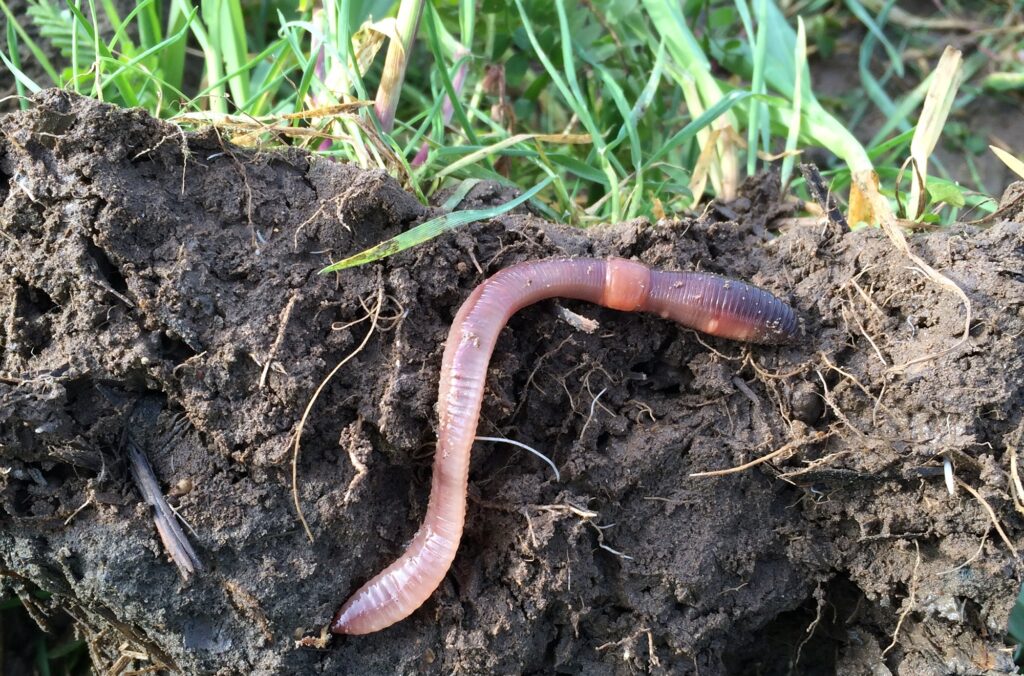Written by Dick Neale from Hutchinsons

It’s all about the soil – this is now a well understand driver of sustainable farming systems. Being in a position to reduce inputs, change cultivation techniques or understand how cover or catch crops might benefit the soil, has to start with the soil, its condition and improvements required.
Whether you’re a farmer that has already moved to a more resilient farming model, or are just starting out, the most important question is to ask yourself is why?
“Many growers will know what they want to achieve or where they want to get to, but unless they know where they are starting from, it is difficult to know which direction to go and the consequences of action taken. Understanding the soil in order to establish a starting point is key and will enable an action plan,” says Dick Neale technical manager at at crop production specialists Hutchinsons.
“I always say the machine is irrelevant, it is what the soil needs that should drive the decision – for example a change in cultivation strategy.”
“Everyone is farming with different soils, skill sets and objectives – and that’s what makes baseline measurements so important, he believes. “It’s important to avoid trying to do everything at once.”
“Baselining means looking at the three pillars of soils – physical, chemical and biological – and understanding what those mean in terms of the growing crop. It helps every decision you will make on the farm – for example, about cultivation and establishment; rotations; soil and crop strategy; catch and cover crops; livestock integration and manures; and machinery requirements.”
“Guessing these won’t lead to optimum economic outcomes,” he says.

“It’s also worth remembering that knowing your baseline provides a good opportunity to engage with the SFI Soils Standard, currently worth upto £44/ha.. “
“Physics, chemistry, and biology – they all work together, you can’t separate them. But as an industry, we have separated them.
“Focussing on all three elements gives clues as to how the soil is functioning and cycling nutrients, and these clues can be followed and lead to solutions to improve all aspects and make potentially unavailable nutrients in the soil available to plants for example.”
“We’ve been focusing on physics and chemistry because they’re easy. For example, the field is green and when I spray it with glyphosate, it goes brown or a cultivation input gives an instant result.”
Biology is far more difficult to engage with, he highlights. “I think the reason we’ve not done a lot with biology is that it has slower impact and takes longer to fully demonstrate the benefits . But biology is fundamental to all soil functions.”
For a clearer picture of the levels of biology in the soil, Mr Neale suggests the Soil Life Monitor (PLFA) test which is a lab test measuring the levels of bacterial, fungi and protozoa in the soil, as well as the quantity of microbial biomass.
“This is a very useful test to see how diverse your soil biology really is, the more diverse, the better the soil performs, but this test allows us to monitor that changes made are actually improving the biological profile over time .”
“It is possible to create a soils benchmark using a Healthy Soils assessment and a soil type focussed Hutchinson Gold soil test. If soils are variable this base approach can be build on further using the unique data from TerraMap,” he says. “These technologies and services have really come along way into giving us an understanding of the soil that we would not previously been able to do.”
Creating a soil benchmark will allow you to pinpoint where high impact outcomes will come from:
- Understand the difference between pH and buffer pH- allows for an understanding of soil base functions
- Know the cation exchange capacity – how big is your soil
- Bulk density and texture – what is your soils structure chocolate sponge cake or brownie
- Organic matter – different layers from LOI OM, dumas carbon, active carbon, carbon to clay layer and C:N ratio
- Extractable nutrients – what are your reserves, focus on “cycle rather than more-on”, how are other soil parameters affecting this?
- VESS physical soil structure test, water infiltration, worm count
“Once a baseline of all these factors has been established, create a report or action plan that all of the teams across the business are fully engaged with . “
Understanding where using the various different soil tests and technologies to best effect is important, says Mr Neale. “For example If you’ve got variable soils, Terramap allows you to understand where those variations are and make some really impactful decisions. If soils are pretty consistent across the field or farm there is less significant benefit to be gained from Terramap.
“For those who want an even deeper understanding of the soils dynamics, the launch of Hutchinsons Terramap Gold service earlier this year marks a step forward in the ability to analyse and map soils with even greater precision, “he adds.
“Terramap Gold provides a thorough insight into the soil’s building blocks and why it behaves in a certain way. That performance may be good, or bad, but knowing exactly what is happening beneath the surface is the starting point for more effective decisions around cultivation strategy, organic matter applications, liming, primary objective of cover crops or the amount and type fertiliser to apply.”

Having created a baseline measurement, then comes the what next question. Ed Brown, Head of Agroecology, believes that any transition or journey into Agroecology should encompass six principles of soil management.
“These should guide every decision on the farm,” he says. “It’s about being flexible depending on the season and soil type- don’t be dogged in your decision making.”
- Minisimising disturbance – the underlying premise of this is to move soils as little as possible but as much as necessary. Some soils may be able to cope with direct drilling straight away, but more often than not, there are several steps to get to this stage thoughout the rotation. It is important to understand that this does not always require buying new kit! Existing kit can be adapted or simply used in a different way, or working with neighbors or contractors to bring in the right machinery for the job at the time. Minimising and targetting use of chemicals is a key part of this, and should be achievable once the soils have improved enough to cope with reducing overall inputs.
- Retaining soil cover -never leave any soil bare, this overlaps with keeping living roots in the soil all year around, there should always be something growing in and on the soil. In doing so, residues are available for worms to feed on for example, and the cover protects the soil from heavy rain and temperatures fluctuations
- Maintaining living roots – these help to stabilise, structure and aerate the soil while providing drainage channels. They also feed soil organisms with carbon rich exudates and are fundamental to building microbial biomass in the soil.
- Maximise diversity by using a varied rotation and avoiding monocultures, this can include intercropping, companion cropping, variety blends, catch and cover crops.
- Integrating livestock – this is not always essential and requires further thoughts about how to do this. It must work for your situation. If it does fit, then having livestock does mean that goals can usually be achieved faster and to a greater extent. For example reducing fertiliser and increasing OM. It’s a form of enterprise stacking, getting more from the same land.
- Finally, keep an open mind! Be prepared to challenge conventional thinking and practices and trial new ideas and techniques to work out which is best for your farm.




